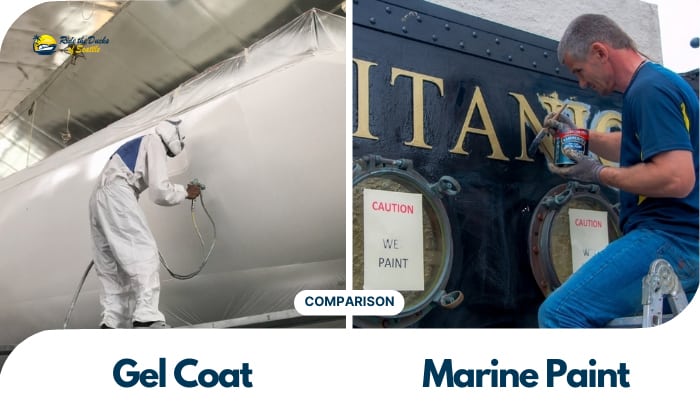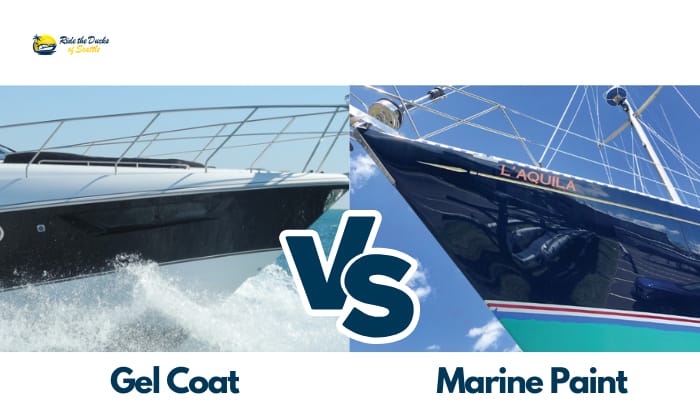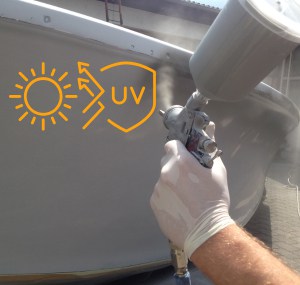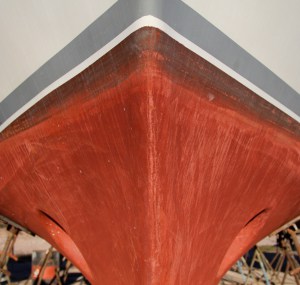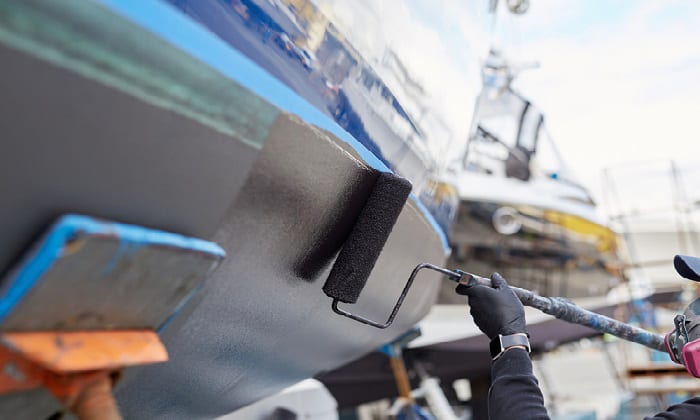For yacht and boat owners, what you paint the bottom of your watercraft with matters. As the vessel spends hours submerged underwater, it gets exposed to eventual damage. This can come from marine life that sticks to the hull, like seaweed and barnacles.
Marine maintenance experts typically use surface treatments to protect the watercraft. It is usually a choice between gel coat vs marine paint.
A gel coat has a shell-like casing and is UV-resistant, while marine paint is easier to apply and repair overall. But which is more durable? This guide shows you all you need to know.
|
|
Gel coat paint |
Marine paint |
| Appearance | Glossy finish
Few colors |
High shine look
Various colors available |
| Purpose | Acts as a protective layer on ships and boats.
Prevents the build-up of elements such as barnacles, sand, seawater, and similar on the hull or bottom of the boat. |
Similar to gel coats
Marine paint serves to protect water vessels from damage like corrosion. |
| Application | A bit challenging to apply as it requires applying several layers | Easier to apply and maintain |
| Durability | 10 – 20 years | About 10 years |
| Repair | Costly and more complicated | Easier and more affordable |
Table of Contents
What is Gelcoat and Marine Paint?
Gelcoat is made of polyester resin and other chemicals, and they are UV-resistant. Meanwhile, marine paint is also referred to as urethane paint from polyurethane and alkyd marine enamel.
They are protective boat layers for boat hulls, ensuring hazardous chemicals and weather elements do not penetrate the boat materials and damage them.
For instance, people use marine paint and gelcoat for fiberglass boat to create a hard and sturdy layer on the boat hull.
What are the differences between paint and gelcoat
1. Color
The gel coat has limited color options. After all, it comes out as a shell-like coating or mold outside a boat’s fiberglass. Meanwhile, marine paint comes in various colors. This makes it more suitable for DIY repairs to match the boat’s old color.
2. Appearance and Properties
Among the two, gel coats are typically more UV-resistant. Aside from the hard casing appearance, gel coat finish also looks more glossy. It is similar to marine paint, which has a high-shine appearance.
Marine paint also has an anti-slip coating variation for boat decks and other walkable areas.
3. Application
Painting gelcoat on a boat requires multiple coatings, layer by layer. Each layer takes 15-20 minutes to dry before applying another layer. It can create a shell-like casing or appearance on the boat.
Marine paint doesn’t require several layers, thus making application simpler. Furthermore, it is the preference for DIY repairs as one can treat its application like standard paint.
4. Durability
If you want your coating to last a few decades, opt for a gel coat. With good maintenance, it can last over 20 years before requiring a redoing. It is more durable and doesn’t require major repairs.
This is opposite to marine paint, which is prone to chipping, given its low chemical stability. Given this, it requires constant repairs within a decade.
5. Price
Gel coat is less expensive, but due to labor costs given the multiple applications, gel coat can match the price of marine paint. Re-gelcoat a boat process involves sanding down, buffering, and polishing to return to its smooth surface.
The latter is more costly, but it is not complicated when applied to the boat.
Benefits and Disadvantages
1. Gel Coat
- Smooth yet tough coating
- Hard casing makes it resistant to nicks and corrosion
- UV-resistant
- Minimal repairs
- A good investment despite being more expensive
- Labor-intensive when repairing or re-applying gel coat on a boat
2. Marine Paint
- Gives high shine look
- Two-part urethane paint gives additional protection
- Maximum retention of color and shine
- Best alternative to labor-intensive gel coat
- Dries easily and fast
- Not UV-resistant and prone to nicks and fading
- Requires major retouches
- Needs mixing and preparations beforehand
Frequently Asked Questions
Is it better to use a gel coat vs paint?
Painting over a gel coat on a boat can assure you of protection. Since it is UV-resistant, you need not worry about the sun wearing off the color and material of your vessel. The coat also hardens like a case, so you are certain it is not easy to get chipped off or get nicks over time.
Also, between gelcoat vs paint, painting might give you more color choices if you want to customize your boat.
Which lasts longer?
Gel coats are preferred by boat owners because of their durability. Since it is a casing, it is tougher to get eroded by harmful elements. One doesn’t need to do major repairs for several years.
Marine paint, however, needs major repairs within a decade. Since it is similar to standard paint, it is vulnerable to chipping.
What kind of paint to use on a boat?
There are many types of paint you can apply on water vessels. Here are some of them:
- Fiberglass Paint
This is where the gel coat falls, along with resins and restoration solutions. These are used to protect the boat and to restore its overall appearance.
- Aluminum boat paint
There are many purposes for this paint. You can use it for overall protection, camouflage, and restoration. It is easier to apply than some types as it doesn’t require a primer. Additionally, it is not restricted to the hull or bottom of the boat. You can also paint above the boat’s waterline.
- Anti-fouling paint
Anti-fouling paint is commonly applied on the hulls of boats. It has “life-destroying” properties. This is crucial as it prevents damage to the watercraft. From the harsh UV rays to the organisms that can attach to the boat, the paint wards them off and preserves the overall structural integrity.
Why must you avoid organisms on boats?
As water vessels spend hours underwater, marine life can attach to them. The marine life includes but is not limited to barnacles, seaweed, algae, sea critters, and similar.
Any ship owner or expert knows these can add weight to the ship. In turn, the vessel moves slower rather than performing at its best. The organisms can interfere with the performance of propellers and engines found on the hull.
What are the two most common bottom paints?
The first is a hard-bottom paint usually made of resilient epoxy. It has biocide or the “life-destroying” properties that ward off marine life.
The second type is ablative paint. Compared to the hard bottom, the ablative wears off easily. This holds true especially when you go at a fast speed, similar to boats with jet engines. It can’t protect the vessel well, demanding constant repairs and re-application.
Can you repair boats on your own?
Yes, you can. However, you must have the patience, skills, proper drainage, and ample space to do so. If you are new to this, then it is best to ask for advice or help from experts.
While working on marine paint is feasible, doing the same with gel coats is a long and challenging process.
First of all, you would need to inspect the entire boat first for any damage and repair them.
Then, apply the coat, sand down, buffer, and polish. You would need extra pairs of hands, depending on the size of the boat. This is to make sure that you don’t miss a spot.
Conclusion
Gel coat vs marine paint is a typical concern for boat owners. While each one has its own advantages and disadvantages, it all boils down to what you are willing to prioritize. If it is the long-term durability of your boat, then a gel coat is your best option. But if you want something easier to work with and more color options, then opt for marine paint.
No matter what you choose, make sure you are prepared to work with them–not only labor-wise but in your budget or expenses as well.

Ten years of enjoying countless trips on boats never made me love them any less! So I am here to put all those experiences into good use for other boaters who want to have a safe and fun trip with their friends and families.

